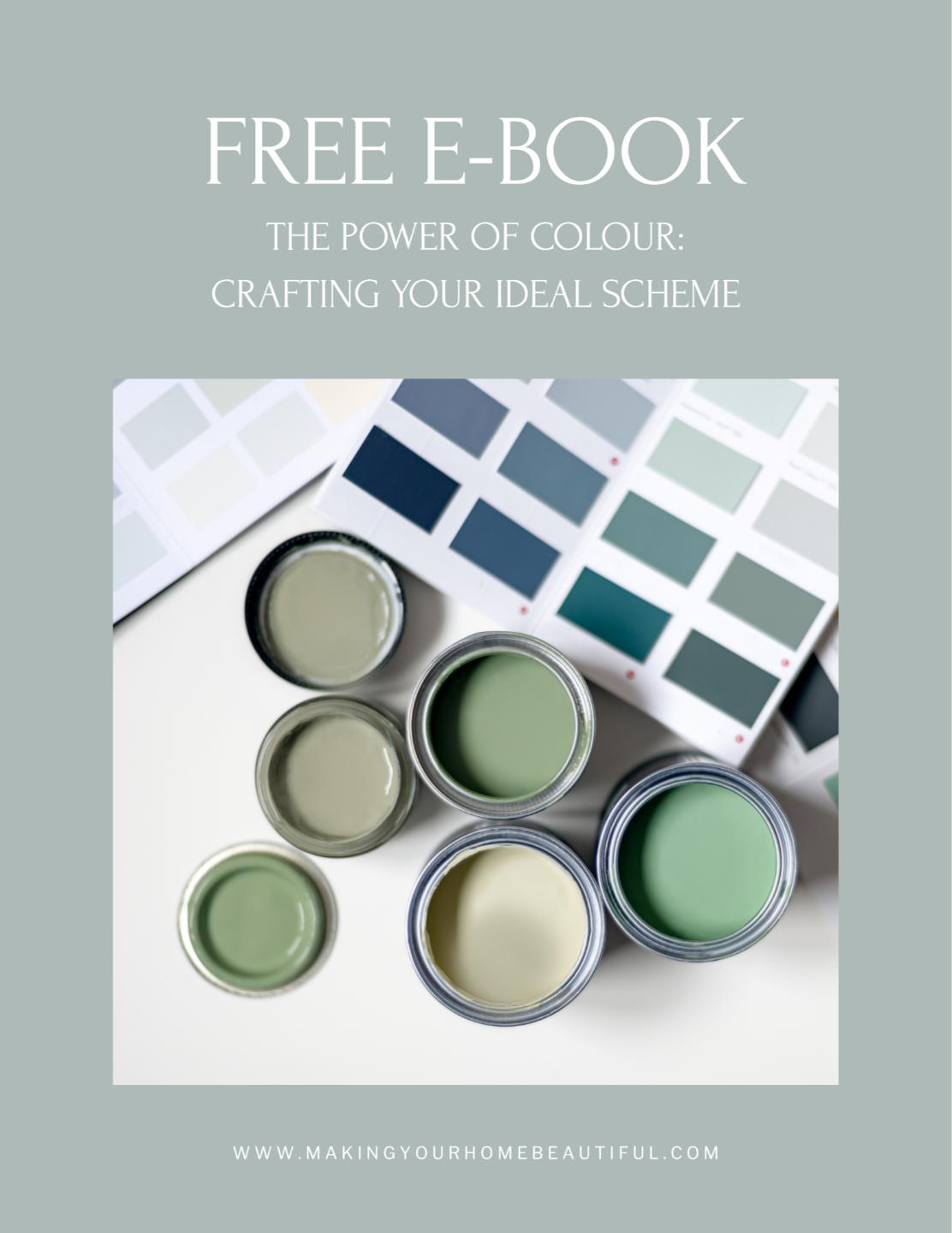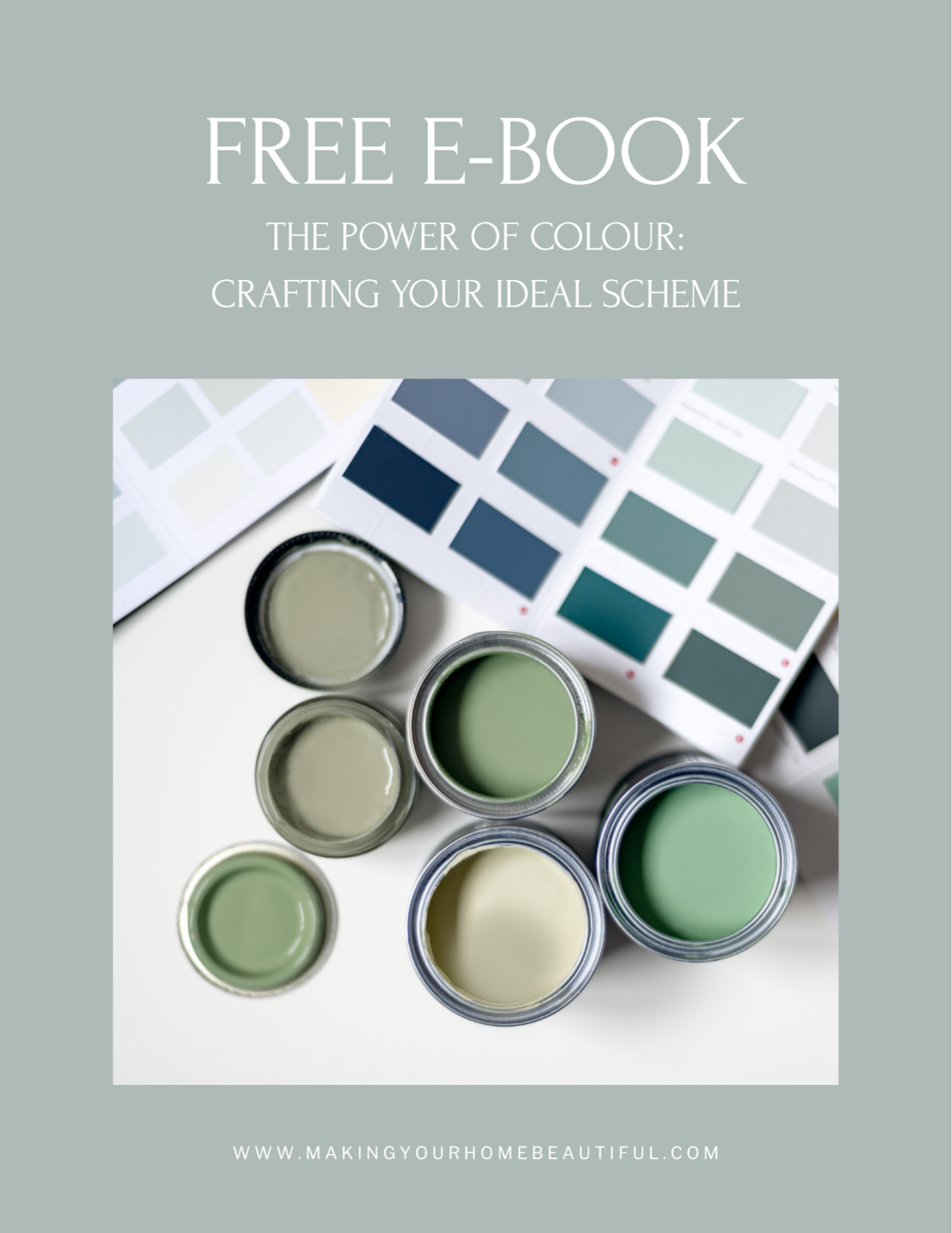Dulux Lexicon is a much talked about white and is one that I specify a lot for both interiors and exteriors. It is often the perfect choice, however, as with all whites it is not necessarily right for every project. This is a white that can be quite alienating and often people love it or hate it. I am going to tell you more about this crisp white from the Dulux range and how to use it in your home.
What is the underlying colour in Dulux Lexicon
All whites, greys, blacks etc. have an underlying colour and when you can learn to see this it makes choosing any colour or neutral for your home so much easier. The underlying colour in Dulux Lexicon is blue. This is what makes it such a beautiful crisp white, but it is also what makes it a very cool white, which is why it is not always perfect for every home.
When you are considering which white to use, rather than look at what it is partnered with, you need to consider the mood that you want to create. Of course, the right colour partnerships are very important, but before you consider this you need to think about how you want to feel in the space. If your house is lovely and sunny and you live in a warm climate, then the full range of Dulux Lexicon could be just perfect as this will give you a cool, crisp and elegant feel to your home. This is just what you want when your house is flooded with lovely sunlight and the temperature outside is hot and steamy. If however you live in a house that is very shaded without much sun, and you live in a cooler climate, then it is unlikely that Dulux Lexicon will be right for you.
![]()
A word about the different strengths of Dulux Lexicon
Most whites from all the major paint companies are offered in varying strengths and this is an important point to understand. Dulux Lexicon full strength shows more of the blue undertone and is obviously darker than half strength which shows a little of the blue undertone. With Quarter strength Lexicon, it is much harder to see the blue undertone and only becomes obvious when you place it next to a warmer creamier white. What you do still get with Lexicon in quarter strength though is the cool and crisp feeling that I mentioned above. You wouldn't walk into a house painted in this and think, oh this is blue, you would just think it looked crisp and very white.
So it is important to consider which strength is best for your project and ensure that this is clear when you brief your painter.
![]()
Dulux Lexicon for exteriors
Dulux Lexicon is perfect for exteriors when you want a crisp and contemporary feel to your home. In full strength, this is a great white for the walls of a modern home and I like to use it for weatherboards and render when a cool, crisp look is required. Remember that outside you need greater depth in your choice of white, so where Dulux Lexicon may be too dark for interior walls, it is a lot lighter when outside.
Half strength of Lexicon can be used for a weatherboards and render if you want a brighter look, however, I don't usually recommend this as it can be a little stark and austere. Generally I would opt for the full strength version. Half strength can be a good option for painting eaves and outdoor ceilings if you have used the full strength on the walls. Whites get twice as dark when they are horizontal so this would then look pretty similar to the wall colour.
![]()
The house above has Dulux Tranquil Retreat weatherboards with Dulux Lexicon Quarter trims.
Lexicon Quarter strength is a really great exterior trim colour. As it is crisp, you get a nice contrast against deeper whites, greys and neutrals that have been used on the walls. This can be a good tool to use if you want a fairly light house, but would like to see some contrast with your trim (posts, fascia, windows and doors).
![]()
The house above is painted in Dulux White Box with Dulux Lexicon Quarter trim.
Lexicon Quarter is often my choice over Dulux Vivid White. Vivid White doesn't have any pigment and painters don't like to use it as the coverage is not good. As Lexicon Quarter has a touch more pigment, it covers much better and is therefore a less expensive colour to choose. I find that you do see the difference between these two whites inside, but outside, it is difficult to tell the difference. It keeps your painter and your hip pocket happy.
![]()
The house above is painted in Dulux Silkwort with Dulux Lexicon Quarter trims.
Dulux Lexicon for interiors
If you are considering using Dulux Lexicon for interior walls, you need to ensure that you consider carefully how this will feel throughout. I recommend painting a large piece of board with two coats and moving this around the house to areas that get a lot of natural daylight to those that are more shaded. This can work really well for contemporary homes, but it can also be a very cold choice.
Half strength of Lexicon will be more approachable, but you will still see and feel the cool undertone in the white.
Dulux Lexicon Quarter strength is a great interior white for walls if you want a very white house. This is often very popular now and can be a great solution if you really just want a house that is going to be white. This is a great solution for people who don't want to see any yellow/cream pink/apricot or green undertones. Remember though to consider the mood you want to create and the location of your house.
![]()
I also like to use the quarter strength for internal doors, architraves, skirting boards and ceilings when a very crisp and clean white is required. This gives you a nice contrast with your wall colours. I usually recommend that if you want white joinery throughout the house in your kitchen etc. that you use the same white as you have for your internal doors and trim. Dulux Lexicon Quarter will give you a very crisp white kitchen, so if this is the look you want, this white will be perfect.
What colours work with Dulux Lexicon
I generally like to keep similar undertones together so with the Dulux Lexicon range obviously anything from the blue family of colours is a perfect partner. Soft cool greys also work really well. As with any colour palette, you don't have to keep it all warm or all cool. By introducing some warm oak tones and tan leather as accents, you achieve a well balanced and interesting colour scheme.
![]()
If I'm using Dulux Lexicon Quarter outside then I find that this works with most colours, simply because it is just a very crisp exterior white. However, once you get to Lexicon half strength, you see more of the cool blue undertone and I find then that I will keep this as a partner to cool blues, greens and greys.
![]()
If you have warm greige or beige tones in your house, outside or inside, I prefer to use a slightly warmer or more neutral white.
I have lots more to tell you about using whites in the following articles:
Stay connected with news and updates!
Join our mailing list to receive the latest news and updates from our team.
Don't worry, your information will not be shared.
We hate SPAM. We will never sell your information, for any reason.

